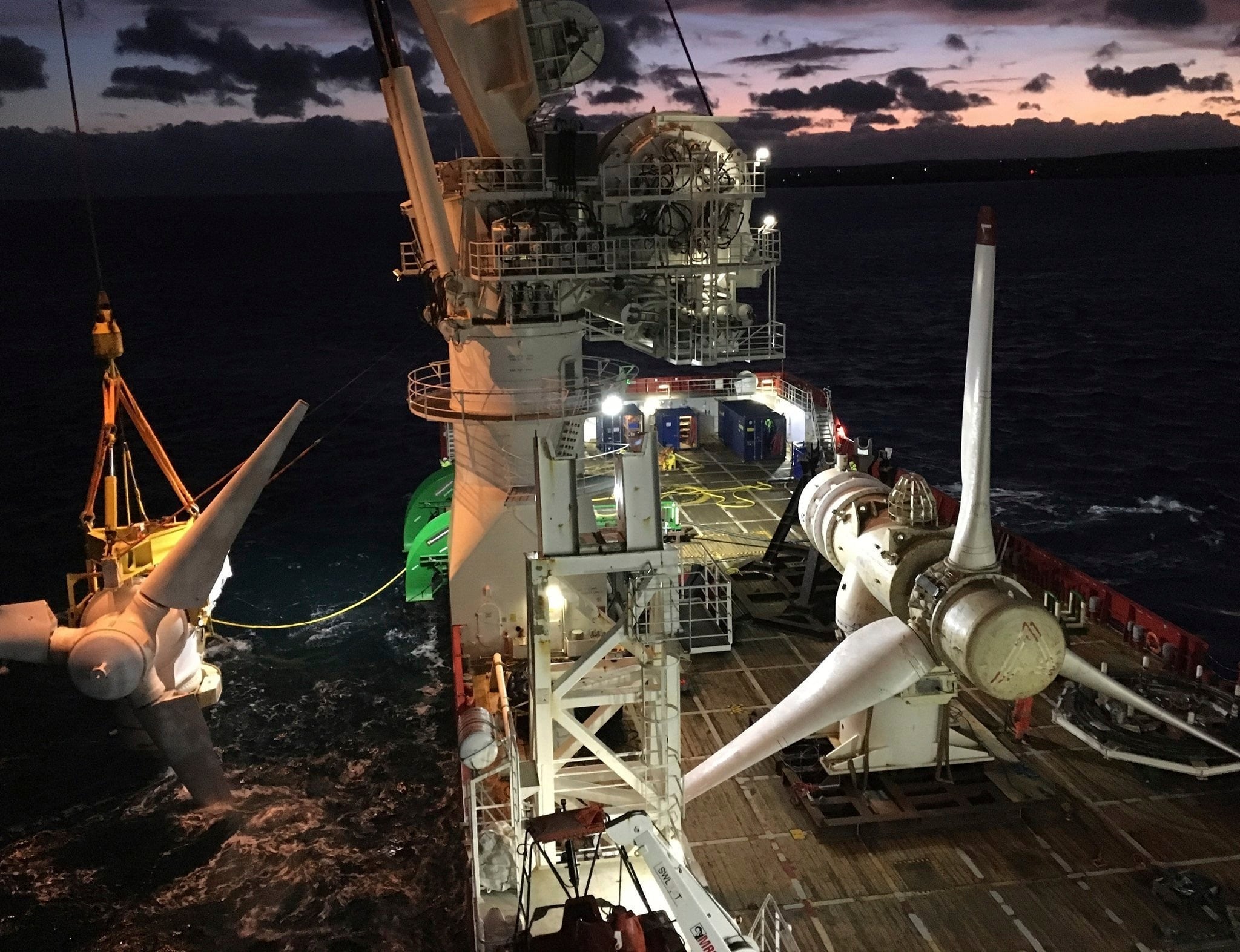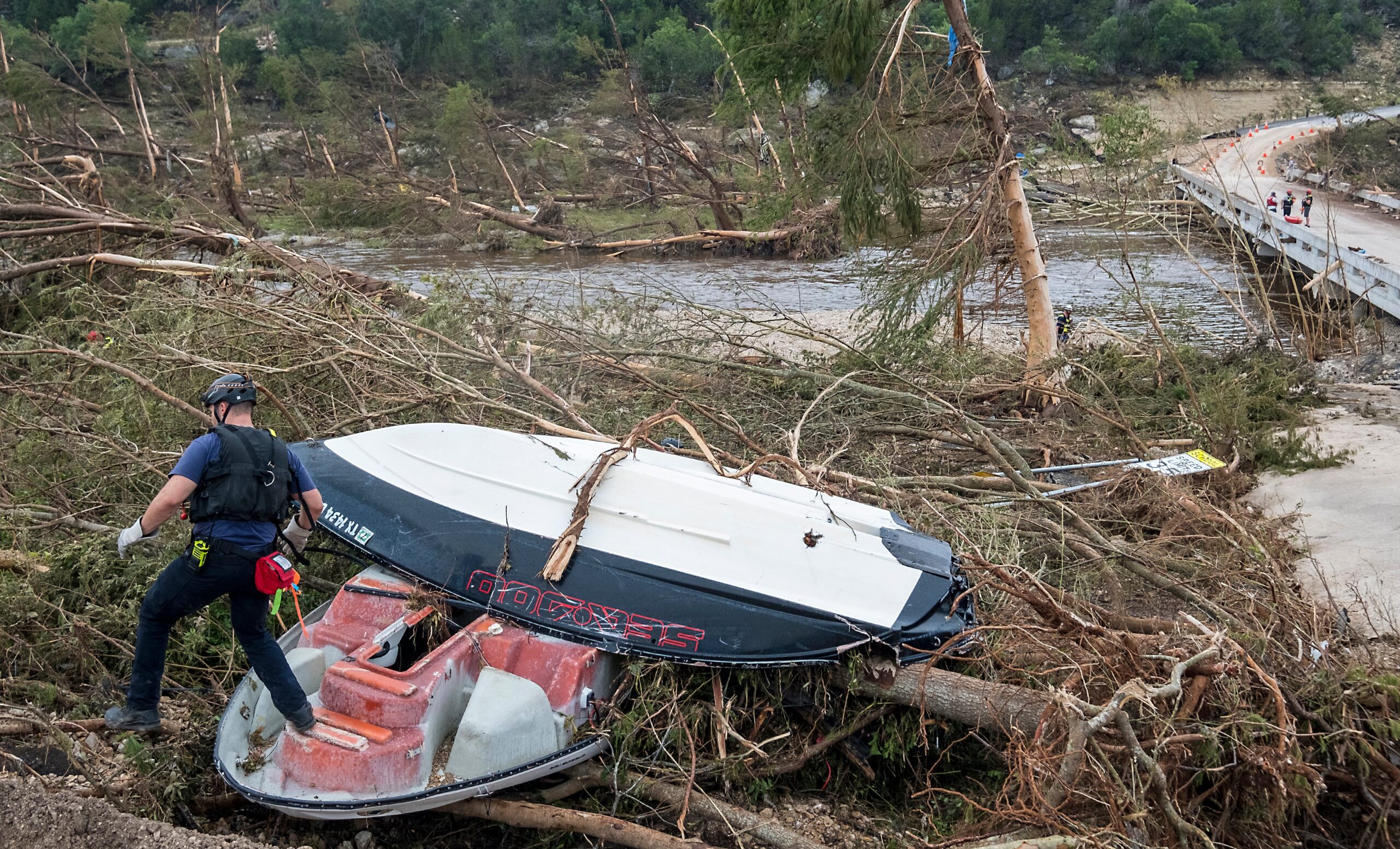A turbine that has been generating electricity from ocean tides for almost six years, submerged in approximately 40 meters (44 yards) of water off the coast of Scotland, is a testament to the technology’s commercial feasibility.
According to the trade group Ocean Energy Europe, maintaining a large, or grid-scale, turbine in the hostile maritime environment for that long is a record that helps open the door for larger tidal energy farms and makes it much more attractive to investors. If the turbines needed to be removed from the water for repair every few years, tidal energy projects would become unaffordable.
Suggested Videos
Though their commercial development is still in its infancy, tidal energy technologies are already maturing. The National Renewable Energy Laboratory claims that the largest untapped renewable energy source in the world is marine energy, a phrase used by researchers to describe power produced by tides, currents, waves, or temperature variations.
Four turbines at the MeyGen tidal energy plant off the coast of Scotland generate 1.5 megawatts of electricity apiece, which is enough to power up to 7,000 households a year. The Swedish firm SKF declared on Thursday that one of the turbines’ bearings and seals had outlasted their 6 1/2-year lifespan without requiring unscheduled or disruptive maintenance. For the past ten years, it has been closely collaborating with the industry on testing and design.
According to R mi Gruet, CEO of Ocean Energy Europe, reaching six years in the sea with continuous operations is a huge milestone that is encouraging for the future of tidal energy.
In terms of tidal energy, Scotland and the UK lead the world. For over eight years, SAE Renewables has been supplying electricity to the grid from the MeyGen plant.
There aren’t many tidal energy installations that consistently produce electricity. According to Andrea Copping, a specialist in the development of marine renewable energy, the majority have been experiments and demonstrations. Before tidal energy can be used more extensively, Copping added, there are still significant obstacles to be addressed, including resolving regulatory concerns, possible environmental impacts, and disputes with other ocean users.
Copping, a distinguished faculty fellow in the University of Washington’s School of Marine and Environmental Affairs, adding that the Scotland project seemed to have solved the issue of whether the turbines can withstand exposure to seawater.
She stated, “I believe they have checked all the boxes.” Since governments and investors, among others, expressed skepticism, they asked, “How in the world are you going to run these things, especially for any length of time in this extremely difficult environment?” And I believe they demonstrated that.
According to Fraser Johnson, MeyGen’s operations and maintenance manager, it’s really difficult to submerge what is effectively a wind turbine that is typically seen on land. He noted that it should be at least a year before the record-breaking turbine needs to be removed from the water for maintenance.
The Inner Sound of the Pentland Firth, a slender passageway with powerful tidal currents that separates Stroma Island from the Scottish mainland, is home to the four turbines. Strong currents are necessary for tidal energy systems to produce electricity effectively. After necessary improvements to the electrical system are completed, MeyGen intends to add 20 turbines in 2030 to increase electricity production. In the future, the location may accommodate up to 130 turbines, which would be more potent than the current ones.
A other kind of tidal project entails building a barrage—a structure that resembles a dam—across tidal waterways, whereas the MeyGen site is in open water. According to Johnson, MeyGen, which has four turbines, is the biggest tidal energy facility of its sort globally.
We wish we didn’t have that title. He said, “We want others, we want more.” Regretfully, others are struggling to match MeyGen’s accomplishments. However, we will advance the industry going forward by collaborating with SKF.
___
Several private foundations provide funding for the Associated Press’s coverage of the environment and climate. All content is the exclusive responsibility of AP. Discover supported coverage areas, a list of supporters, and APs for working with philanthropies at.




